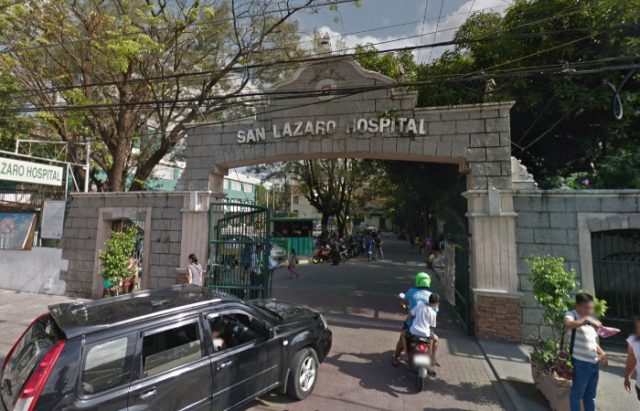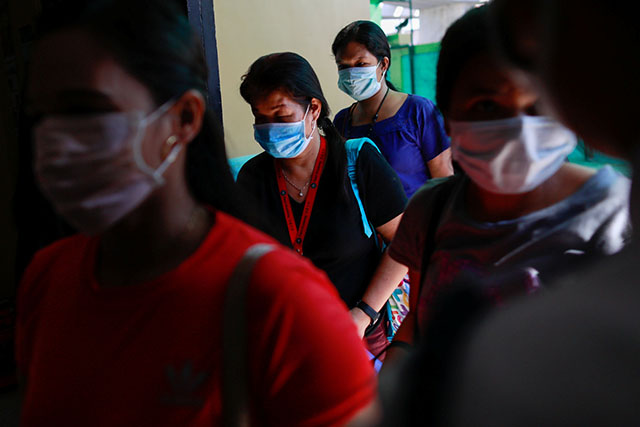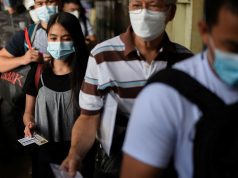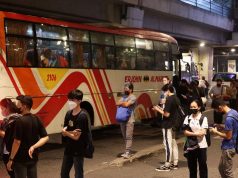
San Lazaro Hospital is where the first confirmed patient suffering the 2019 novel coronavirus in the Philippines was taken.
It is a few minutes away from the crowded university belt in the heart of Manila where some students are asking online for classes to be suspended. Others also want to avoid the area for fear of catching a virus that has largely been unstudied.
But is the hospital capable of handling cases involving highly communicable diseases such as the nCoV, the new international public health emergency?
The Department of Health, since confirming the first case of the virus on Thursday, January 30, repeatedly tried to assured the public of safety precautions that San Lazaro is undertaking as fear and panic grow among Filipinos.
It is, after all, the country’s top infectious diseases facility.
Dr. Ferchito Avelino, head of the Department of Health’s Bureau of Epidemiology said that the Manila-based hospital has a special team specifically assigned to nCoV so that other patients wouldn’t get infected.
“For those na nangangamba, ang San Lazaro is known to be the referral hospital for infectious diseases… Rest assured ‘yung ating mga pasyente sa San Lazaro, sila po ay napo-protektahan from the possible infection na nasa ibang area ng ospital,” he said.
A 38-year-old woman who traveled from Wuhan, China was confirmed to be positive for nCoV after results of the tests came from Australia.
She arrived in the Philippines on January 21 through Hong Kong and was admitted to San Lazaro Hospital on January 25 after “experiencing mild cough,” DOH reported.
As of 10:20 a.m. today, the World Health Organization said that the woman was “not experiencing any symptoms” while isolated in the hospital.
“There are infection prevention & control measures in place at the hospital, including personal protective equipment for hospital staff,” WHO Philippines said.
Prepared facilities
San Lazaro itself reported that it has already prepared isolation units for positive carriers of nCoV.
Dr. Ferdinand de Guzman, the hospital’s spokesperson, said that suspected patients of the viral disease will be admitted in the Pediatric Infectious Diseases Critical Care Unit, Adult Infectious Diseases Critical Care Unit and Payward.
De Guzman said that the units have negative pressure rooms that have ventilation systems allowing contaminated air to flow from the room upwards.
The air is then filtered before it leaves the room and its organisms are killed by the sunlight, reports note.
“Ito po may negative pressure sa loob. ‘Yung sa labas po ay clean. So palabas po ‘yan, the negative pressure will push the negative or contaminated air palabas ng room. There are vents inside the room. Airflow ang binibilang niyan. Para po ang organisms sa loob mailabas po,” De Guzman said.
He added that medical staff specifically assigned to the isolated patients are not allowed to come into contact with or treat other patients in the hospital.

In addition, they are required to wear disposable personal protective equipment to prevent contamination and exposure to the virus.
“We are strict with the standard precautions. May protection po kami, pati foot gear. ‘Pag highly suspected po, dinidispose po ang PPE, ‘yung sinuot ng healthcare worker, whether doctor or nurse. After every patient po. Very strict kami sa infection control… ‘Pag may dumating na bagong patient, gagamit ng bagong PPE,” De Guzman said.
The hospital is also prohibiting persons under investigation to be visited during confinement. There are currently 31 suspected cases, five of whom have been discharged but remain “under strict monitoring,” DOH said.
San Lazaro Hospital is described as a special national medical center for infectious and communicable diseases with a 500-bed capacity.
According to its website, it is “one of the retained special tertiary hospital” of the Department of Health subsidized by the government.
“It has a continuous medical training and research program for medical and paramedical personnel. Some of its short and long term programs are infrastructure improvement and strengthening of its frontline services,” it said.
Panic-stricken community
Yesterday, an overwhelmed the local online community when it was revealed that the 38-year-old woman who tested positive for nCoV was isolated at San Lazaro in Sta. Cruz, a populous district in Manila.
Twitter users expressed their fears knowing the virus’s high transmission rate.
“The first case of Corona Virus is in San Lazaro Hospital, in the capital city of Manila, and approximately 9 mins away from the University Belt. If this becomes a full-scale outbreak, remember that it’s because Duterte put his friendship with China ahead of all our welfare,” a Filipino said.
“Imagine how near the patient diagnosed with nCoV in San Lazaro Hospital to the millions of students, employees, and the rest of the Filipinos. This government really sucks,” another user wrote.
Some schools near Sta. Cruz are the University of Santo Tomas, the University of the East, Far Eastern University, the University of Manila, San Beda University, and the Technological Institute of the Philippines.
Malacañan Palace, the country’s seat of power that also houses the president of the Philippines, is also near the “University Belt.”
The city government of Manila began distributing free masks to public school students yesterday.
WHO has urged the public to practice proper handwashing and to observe good hygiene practices such as covering one’s mouth during coughs and sneezes to prevent the virus from spreading.









